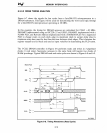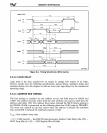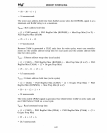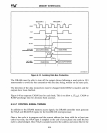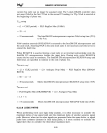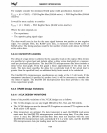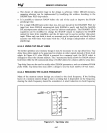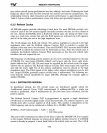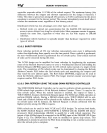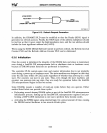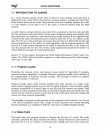
MEMORY INTERFACING
• The choice of chip-select logic in the design
is
arbitrary. Other DRAM memory-
mapping schemes can be implemented
by
modifying the address decoding to the
DRAM State
PLD
chip-selects.
.•
It
is
possible to deassert
RAS#
before the end of the cycle to improve the
RAS#
precharge time .
• For a single
DRAM
bank rather than two, the user should tie the
DRAMPI
PLD A2
input low, leave RASI # unconnected (only RASO#
is
used), and feed the Intel386
DX
microprocessor address bit A2 into the address multiplexer. The
DRAMPI
PLD
equations can be modified to change the RASI # output to duplicate the RASO#
output for more drive capability, and the A2 input can be used as another chip-select
input. When only one bank
is
used, no accesses can be interleaved, and back-to-back
accesses run with three wait states with the 3-CLK design (independent of address
pipelining).
6.3.4.2 USING TAP DELAY LINES
To further optimize your memory design
it
may be necessary to use tap delay lines. Tap
delay lines allow signals to be generated in relation to other signals instead of from olock
edges. In Figure
6-11,
after
RAS#
is
asserted for a memory read, the MUX select
is
changed to select the column address. The 5 nanosecond delay allows for
RAS#
address
hold time while the
20
nanosecond delay of
CAS#
allows for column address setup time.
Tap delay lines can be used to satisfy other
DRAM
parameters, such as minimum
RAS#
pulse width. Tap delay lines may allow a design to use the
le,!-st
number of wait states.
6.3.4.3 REDUCING THE CLOCK FREQUENCY
Many of the memory system timings are related to the clock frequency.
If
the limiting
factor of a memory system design
is
due to a timing that
is
dependent on the frequency,
slowing the clock frequency should be considered. A small reduction in clock frequency
RAS#
NS
MEMREAD#
5
ROWSEL
10
15
20
CAS#
25
231732i6-11
Figure 6-11. Tap Delay Line
6-27



